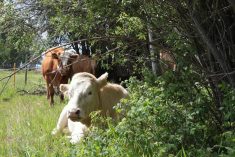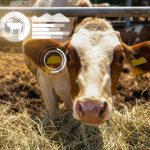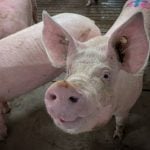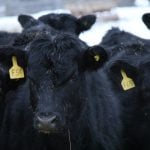Scrotal circumference and scrotal palpation are among the quickest, repeatable and fact-revealing pieces of information we can get on bulls.
Some breeds get away with less scrotal size, but we have also seen that scrotal size, on average, has gone up through selection. Because it is quite heritable, fertility improves.
However, we are probably reaching the point where an increase in scrotal size could have a detrimental effect on fertility. A yearling with a scrotal size above 43 centimetres may be troublesome and mature bulls that reach 50 cm and over seldom stay in the breeding herd for long.
Read Also
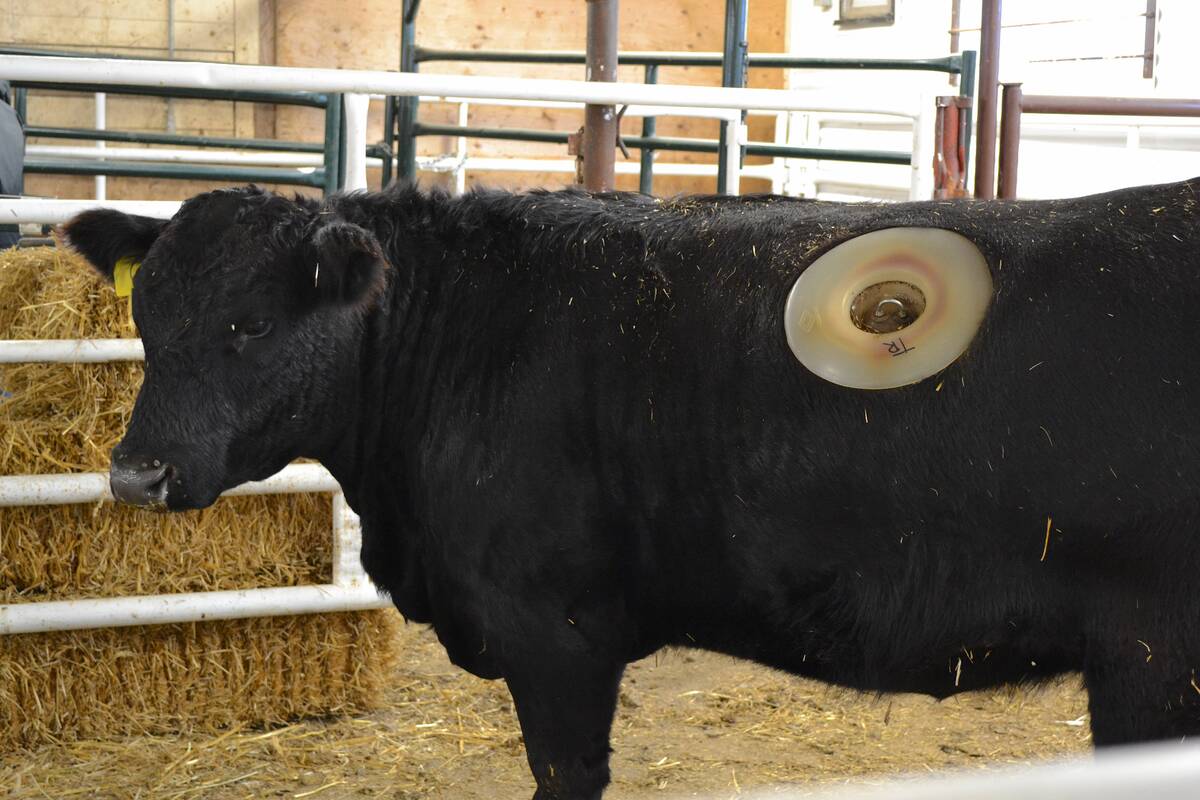
Lakeland College studying livestock wellness through cannulated heifers
Lakeland College’s Applied Research Team is working with six cannulated heifers on a handful of research projects.
This article will shed more light on checking scrotal size, based on techniques used in Canada, Australia and the U.S.
For many years, veterinarians and producers in Canada have been using the ReliaBull tape with the spring-loaded mechanism. It allows consistency and we should all be within one cm of each other if measuring consistently.
Producers can get a tape and easily learn the technique if they want do the checks themselves. It is a matter of gently pulling the testicles down into the scrotum. This is where they would hang if warm but in winter, they are pulled up to allow for temperature regulation.
Once down, the tape is placed around the widest part of the scrotum and pulled tight until the plunger just starts to show red. This is a repeatable measurement and if everyone is doing it correctly, then producers and veterinarians alike in Canada should be close on their measurements.
A feed company has been doing a study of all the bull sale results in the fall that focuses on scrotal circumference. It compares everyone’s results to each other and whether they are using this specific company’s feed and mineral program.
I know pure researchers would downplay this because it’s not controlled research, but the numbers are high and I believe it shows trends. Data is also confidentially ranked, and that has merit for individual producers because they see how they compare to others of the same breed. The results show breed differences and they look as we would expect, which also lends credibility to this study.
It shows a difference in scrotal size overall for those on the company’s mineral program. This adds credence to the adage that good quality minerals and nutrition (along with good genetics) should increase scrotal size.
This study has gone on for a number of years and results are pretty consistent each year. The old wives’ tale that ‘you can’t starve the testicles or the horns out of cattle’ isn’t true.
We are always worried about anything that could affect fertility. It often goes back to nutrition and there are probably many unknowns with nutritional issues leading to poor fertility and potentially smaller scrotal size.
Hire a good nutritionist and have a sound mineral program.
If you are buying bulls yourself, you can have a pretty good idea whether the scrotal measurements make sense. Year to year, you know which breeders’ circumferences make sense and whether they are measured accurately.
Purebred breeders will almost always buy bulls that have above-average scrotums for their age. When looking at size, correlate it to birthdates. We know scrotal size will increase by upwards of two cm a month between 10 to 15 months of age.
When comparing a 12-month-old versus a 15-month-old bull, I would normally want to know when exactly you are going to use the bull. If it is right away, fertility needs to be high whereas a young bull still may need time to grow.
That is why the most accurate measurement and semen test should occur just before you are going to use the bull. If breeding season is a long way off, you may want to retest the bull just before breeding.
When looking for your next herd sire, always have a good look at the testicles. And don’t hesitate to ask (or find out from the catalogue) everything from the health status of the herd and the nutrition program to the scrotal circumference, semen results and any other pertinent facts that will help you determine the best choice for your herd.
The decision should not be made lightly. Veterinarians are transparent about semen forms so all relevant information should be there.




